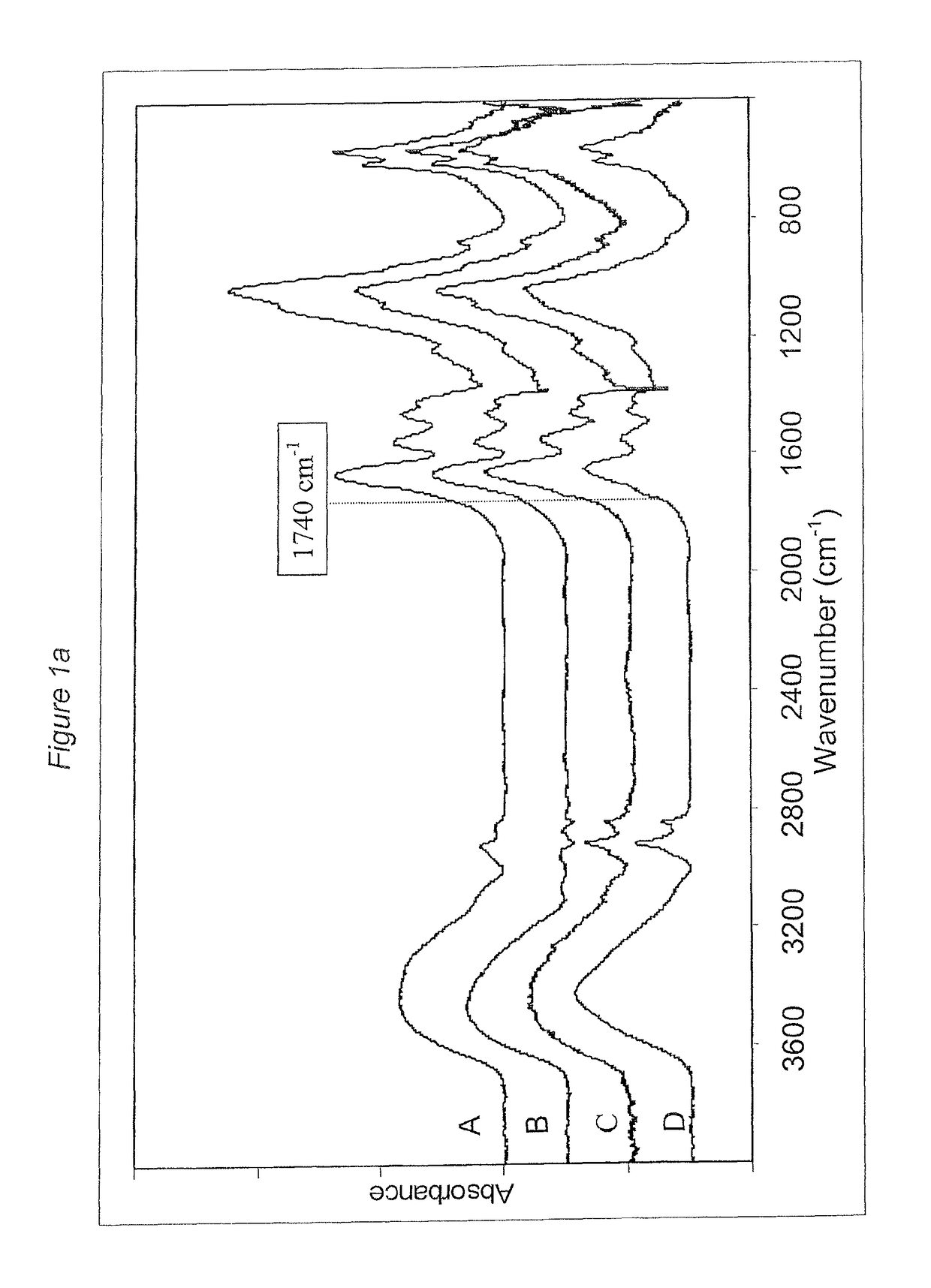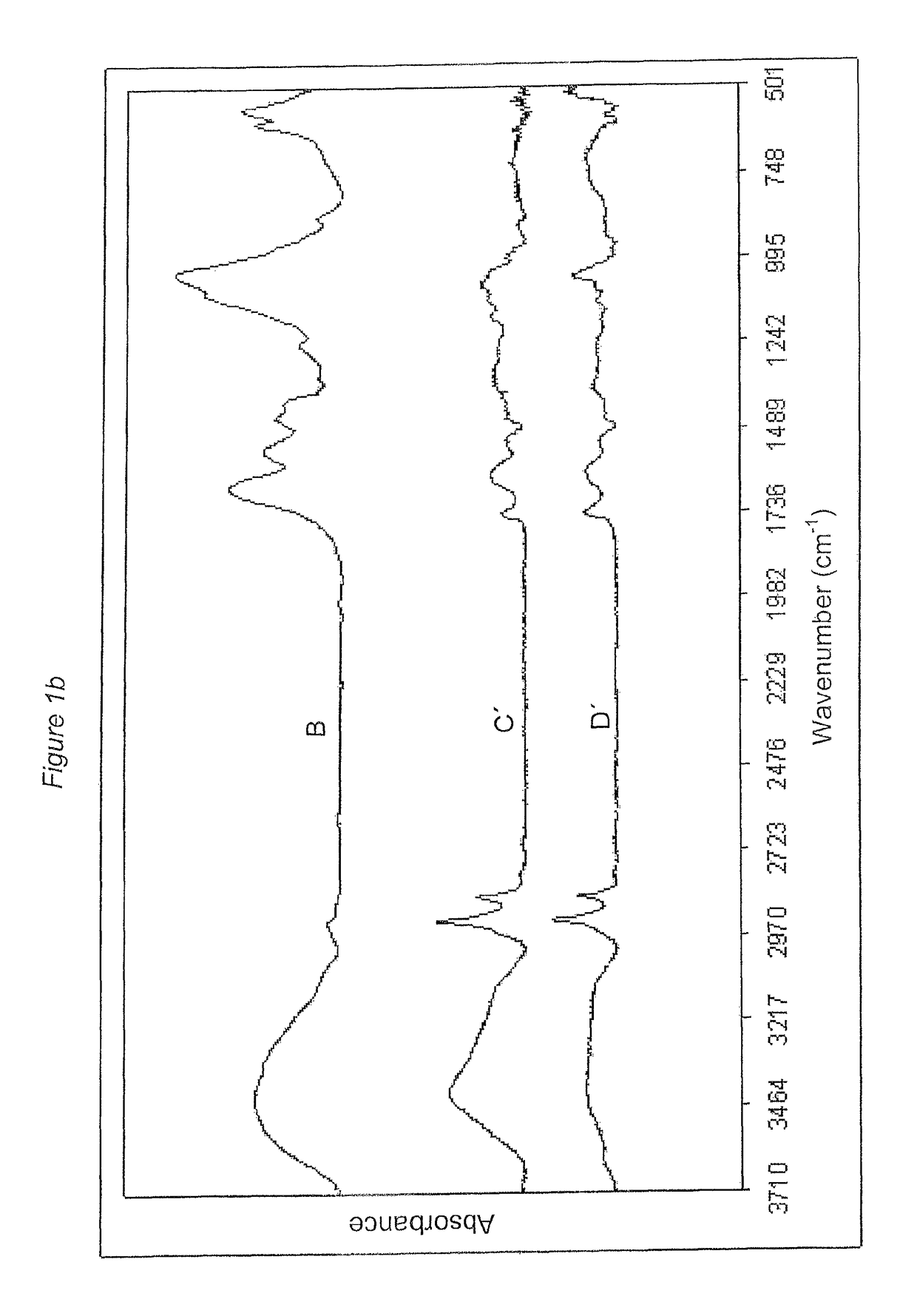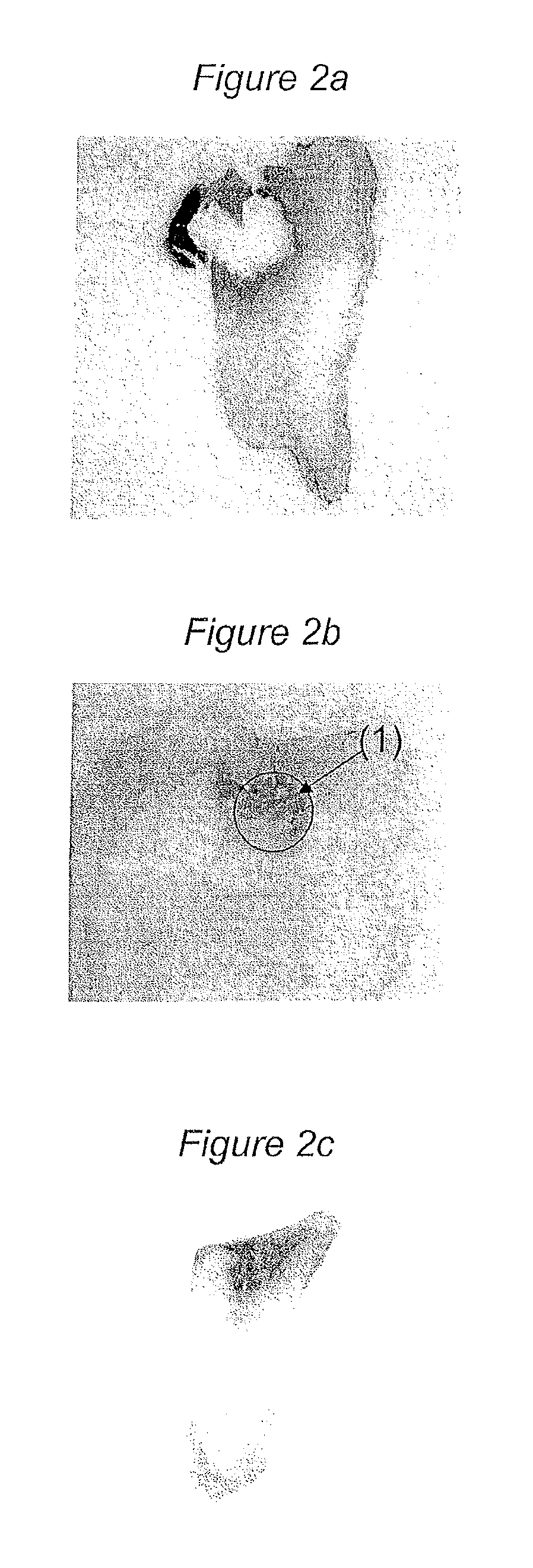Detection and removal of carious dentin tissue
a carious dentin tissue and selective detection technology, applied in the field of dental caries, can solve the problem of not being able to selectively detect and remove carious dentin tissue using hydrazine derivatives, and achieve the effect of efficient and selective detection and removal, and reducing the disadvantages
- Summary
- Abstract
- Description
- Claims
- Application Information
AI Technical Summary
Benefits of technology
Problems solved by technology
Method used
Image
Examples
example 1
[0129]Two extracted permanent human teeth with no previous dental restorations were selected due to their severe carious tissue status and analysed with FTIR within one week after extraction. The outermost part of the carious dental lesions was removed. The remaining dental carious tissue was divided into two layers; one outer layer with discoloured, soft and infected dental carious tissue and one inner layer that was seen as uncoloured and excavated down to the estimated hardness of the remaining healthy dentin by tactile procedures. For each tooth, one sample was taken from healthy dentin and another sample was taken from the inner layer of carious tissue. After incubation in purified water they were left to dry at ambient temperature. The dry weight of each tooth sample was approximately 1 mg. Each sample was then mixed with potassium bromide (KBr) before subsequent FTIR examination with a total pellet weight of 100 mg. The IR analyses were performed using a Mattson Cygnus 100 FT...
example 2
[0132]This experiment aimed to see if the added colours SEEK, Acid red 1, Lucifer Yellow, a combination of Lucifer Yellow and Acid red 1, or 5-(2-2-hydrazinyl-2-oxoethylthio)acetamido)-2-(3-hydroxy-6-oxo-6H-xanthen-9-yl)benzoic acid, Alexa Fluor® 594 and Alexa 350 bind to the surface of caries or not, after excavation down to a clinically caries free denoted surface. Experiments were performed during 4 days.
[0133]Whole caries infected tooth was added to an ortho acryl gel, which after hardening was used as a holder prior to sawing (saw of brand Zaw Micro Tone, German). Slices, having a thickness of 150 μm, were left over night in each colour to be tested (Day one). On the second day, the colours were washed out by rinsing the slices with MQ water and the teeth sections were photographed under either a microscope (6.7×; visible light), in UV (no microscope) or under a fluorescence microscope (100×). Thereafter, an aqueous salt solution (NaCl, 1 M) was added to the slices and incubate...
example 3
[0139]Extracted permanent human teeth with no previous dental restorations were selected due to their severe carious tissue status and analysed with FTIR within one week after extraction. The outermost part of the carious dental lesions was removed. The remaining dental carious tissue was divided into two layers; one outer layer with discoloured, soft and infected dental carious tissue and one inner layer that was excavated down to the observed uncoloured hard surface of the remaining healthy dentin controlled by tactile procedures.
[0140]Healthy dentin tissue and carious dentin tissue from the innermost layer were collected. This healthy dentin tissue sample and carious dentin tissue sample were then each divided into three samples.
[0141]The healthy dentin tissue sample (26 mg) was divided and treated as follows. Sample one, hereinafter denominated S1, (11 mg) was repeatedly washed in purified water and put under vacuum and defined as untreated sample, i.e. the reference sample. The...
PUM
| Property | Measurement | Unit |
|---|---|---|
| wavelength | aaaaa | aaaaa |
| dry weight | aaaaa | aaaaa |
| weight | aaaaa | aaaaa |
Abstract
Description
Claims
Application Information
 Login to View More
Login to View More - R&D
- Intellectual Property
- Life Sciences
- Materials
- Tech Scout
- Unparalleled Data Quality
- Higher Quality Content
- 60% Fewer Hallucinations
Browse by: Latest US Patents, China's latest patents, Technical Efficacy Thesaurus, Application Domain, Technology Topic, Popular Technical Reports.
© 2025 PatSnap. All rights reserved.Legal|Privacy policy|Modern Slavery Act Transparency Statement|Sitemap|About US| Contact US: help@patsnap.com



